Managing Applications
The Applications page lists applications that have been enabled for single sign-on. You can enable applications by using the Applications feature or the Add Applications Wizard.
Adding Applications for Single Sign-On
-
Click Applications > New.

-
(Optional) Add an application that has a prebuilt script.
-
Click Select a Prebuilt Application.
-
Click an application listed in the Description pane.
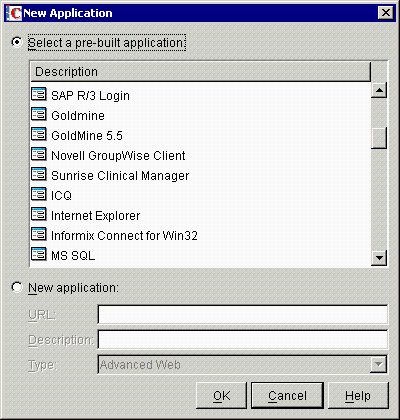
-
Add the application to the list by clicking OK.
-
(Optional) Add an application that SecureLogin will build a script for.
-
Select New Application.
-
Provide information for the text boxes and Type field.
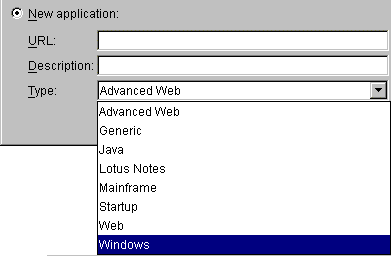
Type: In the Type drop-down list, select the application type (for example, Windows).
Executable Name/Name: In the Executable Name or Name text box, type the executable filename (for example, PlainFare.exe).
If you clicked Web or Advanced Web as the application type, the text-box label is URL. In the URL text box, type the URL where the application is found (for example, http://www.hotmail.com). For information on Advanced Web, see Using the Advanced Web Type.
Description: In the Description text box, type a descriptive name for the application (for example, PlainFare).
-
Click Create.
-
Add a user ID and a script for the application.
The User IDs page displays the user IDs linked to or associated with this application.

To add a user ID, click User ID, then click New. As the following figure illustrates, you can use an existing user ID or create a new one.

If you use the SecureLogin desktop client to add a user ID, the dialog box varies.
To use an existing user ID, click Yes. In the New User ID Link dialog box, select the user IDs that you want linked to this application, then click OK.
To create a new user ID, click No, then see Creating User IDs.
To edit a user ID, on the Applications tab, click the application, click Edit, add a User ID, type a script, then click OK. For new user IDs, the Edit dialog box automatically opens.
-
Save the data by clicking OK or Apply on the main page.
Using the Advanced Web Type
When you select New Application to add a Web application in SecureLogin 3.51, you can select either the Web type or the new Advanced Web type.
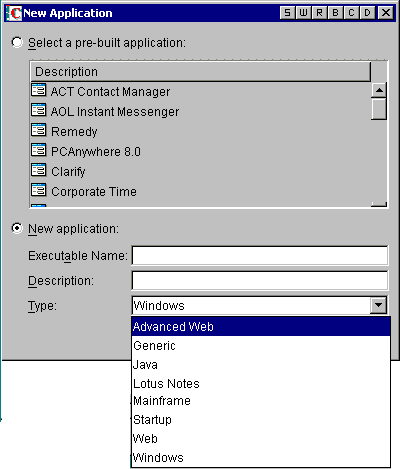
The Web option remains in SecureLogin 3.51 so that customers who upgrade from previous versions of SecureLogin don't lose their existing Web scripts. In SecureLogin 3.51, the Web type can use the Advanced Web script commands the same as the new Advanced Web type can.
In earlier SecureLogin releases, Web pages were scripted as whole pages. Therefore, SecureLogin couldn't distinguish among frames within the Web page. The Advanced Web scripting feature allows you to script for a particular frame within a Web page.
For information on Advanced Web Script commands that you can use (for example, Attribute) see "SecureLogin Commands" in the Nsure SecureLogin 3.51 Scripting Guide.
Using the Generic Script Type
The Generic script type is for generic scripts. Generic scripts can be common to many scripts. Instead of copying and pasting the script, you can keep the script in a generic platform and include it in all scripts.
For example, you can use a standard block of script to prompt a user for a variable. By using the Include command and subcommands in various scripts, you can call this generic script.
Editing Scripts
When you add an application, SecureLogin either uses a prebuilt script that you select or creates a script for the application. You can view, edit, or modify the script.
-
Click Applications.

-
Click the application, then click Edit.
-
Click Script.
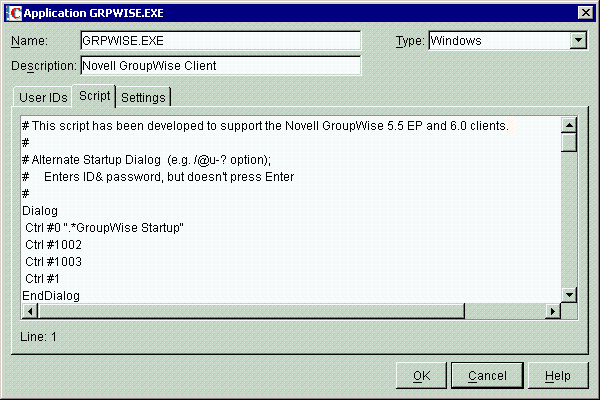
-
Edit the script, then click OK.
For information on scripts, see the Nsure SecureLogin 3.51 Scripting Guide.
Modifying Settings for Applications
-
Click Applications.

-
Click the application name, click Edit, then click Settings.
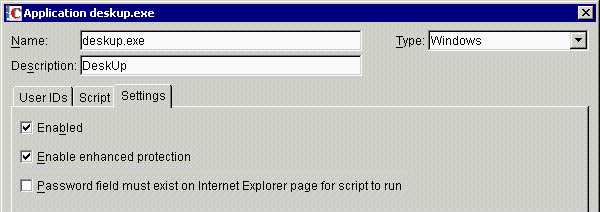
-
Check the check boxes for the desired settings.
The following table provides information on the settings:
Enabled |
When the check box is checked, SecureLogin can use the user ID and script for this application and log the user in to the application. |
Enable Enhanced Protection |
Enhanced Protection is a feature in Novell SecretStore®. When the Enhanced Protection option is enabled for any secret in SecretStore, if an administrator changes or resets the user's eDirectory password, SecretStore enters a locked state. To unlock SecretStore, the user enters the previous eDirectory password (not the password that the administrator changed to). This feature protects users from a mischievous administrator who wants to discover confidential information. If the administrator changes the user's password, the login data that is enhanced protected will be locked. |
Password Field Must Exist on Internet Explorer Page for Script to Run |
Some Web pages have a general Login field but not an accompanying password field. If you uncheck the check box, the script runs for these pages as well as for pages requiring a password. If you check the check box, the script runs only on the pages that have a password field. You can write a Web script that has SecureLogin fill in forms that don't contain any passwords. Therefore, a password field isn't always necessary. This setting is for extra security or validation, to make sure that a password field exists on the page before the script runs. |









